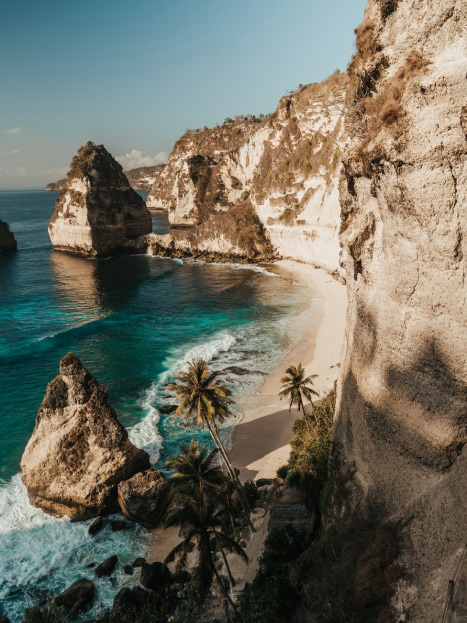
Explore Sundarban!
Explore the Enigmatic Beauty of Sundarban in India
Step into the enchanting world of the Sundarbans in India, where nature reveals its mysterious and captivating wonders. Situated within the delta of the powerful Ganges, Brahmaputra, and Meghna rivers, this UNESCO World Heritage Site seamlessly merges biodiversity, culture, and adventure. Join us as we set out on a journey to unveil the secrets and unparalleled beauty that the Sundarbans hold.
Book your Sundarban Tour with Sundarban Trisha Tourism for an immersive experience in nature’s pristine wilderness.
Last Quarter Bookings

Discovering Sundarban's Unique Flora and Fauna
The Sundarbans is renowned for its rich biodiversity, hosting a myriad of flora and fauna. Mangrove forests, spanning over 10,000 square kilometers, dominate the landscape. These mangroves are not just any trees; they are a crucial part of the ecosystem, acting as a natural barrier against cyclones and safeguarding the land from erosion.
As you venture deep into the heart of Sundarbans, you’ll encounter a diverse range of wildlife. The elusive Bengal tiger, an apex predator, calls this place home. The Sundarbans is the largest tiger reserve in India, providing a safe haven for these majestic creatures. Other inhabitants include spotted deer, crocodiles, and a myriad of bird species, creating a thriving ecosystem unique to this part of the world.
Geography and Formation
The Sundarbans, derived from the Sundari trees (Heritiera fomes) that dominate the region, is a complex network of tidal waterways, mudflats, and small islands. The unique topography of the Sundarbans is a result of the intricate interplay between land and water, where the tides shape the landscape, creating an ever-changing mosaic of water and land.
The mangrove ecosystem acts as a natural buffer against cyclones and tsunamis, playing a crucial role in protecting coastal areas from natural disasters. The mangrove trees, with their stilt roots and salt-tolerant adaptations, form an intricate labyrinth that supports a rich tapestry of life.
Biodiversity in the Sundarbans
A. Flora:
Sundari Trees (Heritiera fomes): The Sundarbans is named after these majestic trees, known for their adaptability to saline conditions. Sundari trees play a vital role in stabilizing the soil and providing habitat for numerous species.
Mangrove Species: Besides Sundari, the Sundarbans is home to various other mangrove species, including the Gewa (Excoecaria agallocha), Keora (Sonneratia apetala), and Hental (Phoenix paludosa), forming a diverse ecosystem that contributes to the region’s ecological balance.
B. Fauna:
Royal Bengal Tiger (Panthera tigris tigris): The Sundarbans is famous for being the habitat of the elusive and endangered Royal Bengal Tiger. The mangrove forests provide a unique environment for these majestic creatures, and their adaptation to swimming makes them exceptional swimmers, navigating the intricate network of waterways.
Spotted Deer (Axis axis): The Sundarbans is also home to the spotted deer, an important prey species for the Bengal tigers. Their presence contributes to the ecological balance by regulating vegetation growth through herbivory.
Estuarine Crocodile (Crocodylus porosus): The Sundarbans houses a healthy population of estuarine crocodiles. These apex predators play a crucial role in maintaining the ecological integrity of the region.
Gangetic Dolphin (Platanista gangetica): The tidal waters of the Sundarbans provide a habitat for the Gangetic dolphin. These elusive creatures are indicators of the health of the aquatic ecosystem.
Avian Diversity
A. Migratory Birds:
Siberian Cranes (Grus leucogeranus): The Sundarbans serves as a crucial wintering ground for a myriad of migratory birds, including the majestic Siberian cranes. The region’s vast mudflats and tidal creeks provide an ideal feeding ground for these migratory species.
Asian Openbill Stork (Anastomus oscitans): These distinctive storks are commonly seen in the Sundarbans, foraging in the shallow waters for mollusks and small fish.
B. Resident Birds:
White-Bellied Sea Eagle (Haliaeetus leucogaster): The Sundarbans is home to a variety of raptors, including the white-bellied sea eagle, which preys on fish and small mammals in the region.
Masked Finfoot (Heliopais personata): A rare and elusive bird, the masked finfoot is found in the dense mangrove forests, navigating the intricate waterways with remarkable agility.
Conservation Efforts
The Sundarbans face various threats, including climate change, habitat degradation, and human-wildlife conflict. Conservation initiatives are crucial to preserving this unique ecosystem.
A. Tiger Conservation:
- Strengthening anti-poaching measures.
- Implementing community-based conservation programs.
B. Mangrove Protection:
- Sustainable harvesting of mangrove resources.
- Afforestation and restoration projects.
C. Community Involvement:
- Involving local communities in conservation efforts.
- Promoting eco-tourism for sustainable economic development.
Human-Wildlife Conflict and Conservation Challenges
A. Tiger-Human Conflict:
- Impact on Local Communities: The presence of Bengal tigers in the Sundarbans brings about challenges, including instances of human-tiger conflict as these apex predators occasionally prey on livestock or, in rare cases, pose a threat to human life.
- Mitigation Strategies: Implementing strategies such as community awareness programs, secure livestock pens, and early warning systems can reduce conflict and enhance coexistence.
B. Climate Change and Sea Level Rise:
- Impact on Habitat: The Sundarbans are vulnerable to climate change-induced sea level rise, which threatens the mangrove ecosystem and the species it supports.
- Adaptation Measures: Initiatives focusing on climate-resilient mangrove restoration and sustainable development practices can mitigate the impacts of climate change on the Sundarbans.
C. Pollution and Habitat Degradation:
- Industrial Activities: The Sundarbans are susceptible to pollution from nearby industrial activities, impacting water quality and mangrove health.
- Conservation Strategies: Strict regulations, environmental impact assessments, and sustainable practices are essential to minimize pollution and habitat degradation.
Scientific Research and Monitoring
A. Biodiversity Surveys:
- Systematic Studies: Ongoing biodiversity surveys help scientists understand the intricate relationships within the Sundarbans and monitor changes over time.
- Data-Driven Conservation: The data collected contributes to evidence-based conservation strategies and helps track the health of the ecosystem.
B. Technological Innovations:
- Satellite Monitoring: Remote sensing technologies aid in monitoring changes in land cover, allowing for timely intervention in the face of habitat loss or illegal activities.
- Camera Traps and GPS Tracking: Advanced technologies like camera traps and GPS tracking assist researchers in studying elusive species like Bengal tigers and gaining insights into their behavior.
Eco-Tourism and Sustainable Development
A. Balancing Conservation and Tourism:
- Community Involvement: Engaging local communities in eco-tourism initiatives ensures that economic benefits are shared, fostering a sense of responsibility for conservation.
- Regulation and Education: Implementing strict regulations on tourist activities and providing educational programs can help minimize the ecological impact of tourism.
B. Benefits of Eco-Tourism:
- Economic Opportunities: Sustainable tourism creates jobs and income for local communities, incentivizing them to actively participate in conservation efforts.
- Educational Value: Eco-tourism serves as a platform for raising awareness about the importance of biodiversity and the need for conservation.
Indigenous Knowledge and Traditional Practices
A. Local Ecological Wisdom:
- Traditional Ecological Knowledge (TEK): Indigenous communities residing in and around the Sundarbans possess valuable traditional knowledge about the flora and fauna, helping in sustainable resource management.
- Harmony with Nature: Understanding and incorporating indigenous practices can contribute to conservation strategies that respect the delicate balance between human needs and nature.
B. Sustainable Livelihoods:
- Eco-Friendly Livelihoods: Encouraging sustainable practices such as eco-friendly fishing, honey harvesting, and non-destructive mangrove resource utilization can provide livelihood options for local communities.
- Community-Based Enterprises: Supporting community-based enterprises ensures that economic development aligns with conservation goals.
Indigenous Knowledge and Traditional Practices
A. Local Ecological Wisdom:
- Traditional Ecological Knowledge (TEK): Indigenous communities residing in and around the Sundarbans possess valuable traditional knowledge about the flora and fauna, helping in sustainable resource management.
- Harmony with Nature: Understanding and incorporating indigenous practices can contribute to conservation strategies that respect the delicate balance between human needs and nature.
B. Sustainable Livelihoods:
- Eco-Friendly Livelihoods: Encouraging sustainable practices such as eco-friendly fishing, honey harvesting, and non-destructive mangrove resource utilization can provide livelihood options for local communities.
- Community-Based Enterprises: Supporting community-based enterprises ensures that economic development aligns with conservation goals.
Sundarban Trisha Tourism's Pivotal Role in Sustainable Growth
The integration of Sundarban Trisha Tourism has proven to be a significant catalyst in promoting eco-tourism in the Sundarbans, offering a dual benefit of conservation and economic growth. The initiative not only highlights the natural wonders of this unique mangrove ecosystem but also plays a crucial role in attracting more visitors, thus contributing to the local economy.
Sundarban Trisha Tourism, with its sustainable and community-focused approach, has created a platform for travelers to experience the beauty of the Sundarbans while ensuring minimal impact on the delicate environment. By emphasizing responsible tourism practices, the initiative not only preserves the natural habitat but also actively involves local communities, providing them with opportunities for economic empowerment.
The increase in tourist footfall driven by Sundarban Trisha Tourism translates into a boost for the local economy. Local businesses, including accommodations, restaurants, and artisanal enterprises, witness growth, creating a ripple effect that benefits the entire community. This economic injection, coupled with the conservation efforts promoted by the initiative, establishes a harmonious balance between tourism and environmental preservation.
Moreover, Sundarban Trisha Tourism serves as an educational tool, raising awareness about the importance of conservation and sustainable practices among visitors. Through guided tours and interactive programs, tourists gain insights into the fragile yet resilient nature of the Sundarbans, fostering a sense of responsibility and respect for the ecosystem.
As this initiative continues to thrive, it is crucial to maintain a delicate equilibrium between the influx of visitors and the preservation of the Sundarbans’ biodiversity. Close collaboration between Sundarban Trisha Tourism, local communities, environmental agencies, and the government ensures that the economic benefits derived from tourism are sustainable and do not compromise the long-term health of this invaluable ecosystem.
In essence, Sundarban Trisha Tourism emerges not just as a facilitator of travel but as a guardian of the Sundarbans, championing responsible tourism practices that nurture both the natural wonders and the livelihoods of those who call this remarkable region home. Through this collaborative and mindful approach, Sundarban Trisha Tourism stands as a beacon, illuminating a path where conservation and economic prosperity coexist, ensuring the Sundarbans remain a thriving sanctuary for generations to come.
Total Visitors
Total Tours
Local Employment
Last Quarter Bookings
Testimonials
What our happy clients say
"OMG! I cannot believe that I have got a brand new landing page after getting appmax. It was super easy to edit and publish.I have got a brand new landing page."

Mila McSabbu
Freelance Designer
"OMG! I cannot believe that I have got a brand new landing page after getting appmax. It was super easy to edit and publish.I have got a brand new landing page."

Jenny Wilson
UI/UX Designer
"OMG! I cannot believe that I have got a brand new landing page after getting appmax. It was super easy to edit and publish.I have got a brand new landing page."

Mila McSabbu
Freelance Designer
